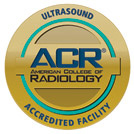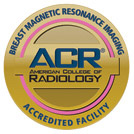To examine internal structures and the potential spread of cancer, a doctor may request magnetic resonance imaging (MRI) of the prostate gland. Detailed observations of tissue structures and organ function may help in the diagnosis of infection, congenital abnormalities or an enlarged prostate gland.
What Is an MRI of the Prostate?
An MRI is a non-invasive diagnostic imaging solution that uses a strong magnetic field and radio waves to take pictures of the body’s internal structures. The technology generates these images on a computer screen for diagnostic or observational purposes, as the images are detailed enough to identify diseases and other abnormalities.
Certain MRIs may involve an injection of contrast gadolinium dye, which is ideal for patients allergic to iodine. The patient lies on a table below a cylindrical-shaped machine with a circular magnet at the center.
Within this setup, an electrical current travels through a series of wire coils to create a magnetic field – the coils may be placed near the part of the body being examined. The coils then send out and receive radio waves, which identify and line up with the body’s hydrogen atoms.
At this point, the hydrogen atoms start returning to their original positions and, in the process, give off variable amounts of energy, depending on the body’s tissues. The scanner captures the energy given off to generate the images, which appear like cross-sections and may be taken at different angles.
Compared to other imaging solutions, MRI is more reliable for identifying diseased tissue and offers a few additional benefits:
- The patient is not exposed to radiation.
- The technology is ideal for early diagnosis of cancers, tumors, infections and prostatic hyperplasia.
- With gadolinium contrast dye, the patient is less likely to experience an allergic reaction. In the instance a patient does, it can easily be controlled with medication.
Nevertheless, the procedure has a few risks, particularly if sedation is used. Patients and their doctors should know:
- How MRI technology affects implanted medical devices. The device itself may malfunction and the images may experience a degree of distortion.
- An allergic reaction to the contrast dye may occur. In these rare instances, the doctor may quickly administer medication to control the reaction.
Who Should Have This Procedure?
Doctors request an MRI of the prostate to examine this portion of the reproductive system located in front of the rectum and below the bladder for a few reasons:
- Assess a patient for prostate cancer
- Determine if existing prostate cancer has spread beyond the gland
- Examine the area for prostatitis, a prostate abscess or benign prostatic hyperplasia
- Observe congenital abnormalities
- Detect and assess complications after pelvic surgery
MRIs are not ideal for all patients, including individuals with metal implants or other objects in the body. Individuals with the following conditions must inform their doctor of the implant or object’s presence well in advance of the procedure to be evaluated for safety and potential complications:
- Certain cochlear implants in the ear
- A clip used for brain aneurysms
- Coils added to blood vessels
- Older cardiac defibrillator or pacemaker
- Shrapnel, bullets or other foreign metal objects dislodged in the body, especially near the eye
- Tattoos containing iron dyes or certain types of permanent makeup
Preparation
Due to the risks mentioned above, patients are strongly advised to speak with their doctor about any existing health conditions, recent surgeries or allergies, including:
- If the patient has one of the implanted medical devices listed above. The procedure cannot be performed, unless the type of implant and its MRI compatibility are documented.
- Larger-bodied patients; patients above a certain weight limit might not fit into the scanner.
- Patients who recently had a prostate biopsy. Because MRI technology can’t always distinguish between inflammation and cancer tissue, patients are advised to wait six to eight weeks after undergoing a biopsy.
- Patients who are claustrophobic; your doctor may prescribe a mild sedative to help you through the procedure.
- Patients who have difficulty holding their breath or sitting still. Not being able to sit still or hold your breath can affect image quality.
If the patient can undergo an MRI for the prostate, preparation may entail:
- Food and drink restrictions. You may be asked to eat light meals the day before and the day of the procedure, although the patient can still take medications as normal.
- Leaving jewelry, piercings, hearing aids, dental work, cell phones, watches, tracking devices, glasses and all other removable metal objects at home.
- Patient will be asked to change into provided clothing prior to MRI
An MRI of the prostate is performed on an outpatient basis. As the procedure begins, the patient will be placed on a movable exam table, perhaps with straps or pillows for more comfortable positioning. The technologist will place the coils near the area about to be scanned. Each scan or sequence lasts several minutes and the patient should expect multiple scans during the exam:
- If contrast dye will be used, the patient will receive it through an IV placed in the arm. Patients may briefly feel a cool sensation or some discomfort after the needle is inserted.
- As the procedure begins, the patient will pass below the magnet. Meanwhile, the technologist are sitting in a separate room to observe the procedure, speaking via intercom.
- Throughout all sequences, you may hear a thumping or tapping sound. The coils create these noises as the images are being taken. You can relax between sequences, but it’s advised to stay in the same position.
After all sequences are complete, the IV line and will be taken out. Unless a patient was sedated, he or she can resume normal activities and eating habits after.
Following the exam, the radiologist will review the results with your doctor, who may request a follow-up appointment or MRI.
Has your doctor recommended an MRI to assess your prostate? Contact us to make an appointment today!
















